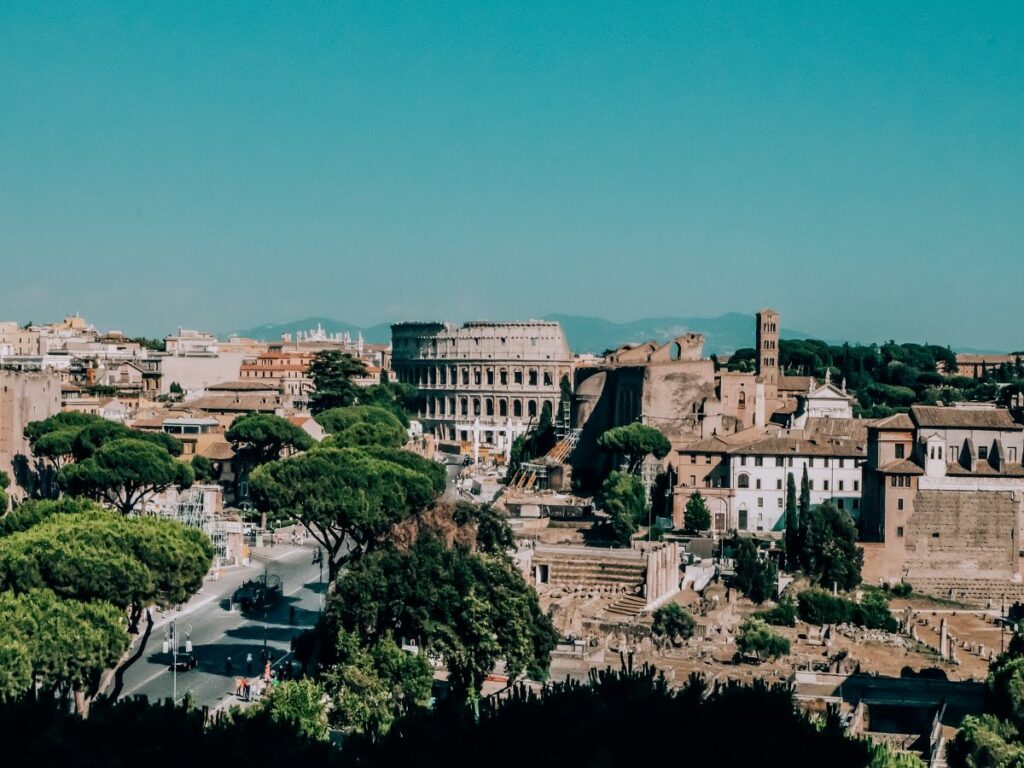They say all roads lead to Rome. Upon visiting it’s immediately apparent why. The streets of Italy’s Capitol are overflowing with 2,000 years of art, art history, architecture, and history, the city is a living museum that cannot be experienced in a day. Its merits cannot be conveniently distilled into a single article so expect to see additional content and suggestions. To get things started here are the first five sites to visit when you get to Rome.

The Colosseum
The world’s largest ancient stadium. The Flavian Amphitheater, as it was originally named is Rome’s most well-known landmark. The sands of the Colosseum played host to violent gladiatorial combat, simulated hunts, and re-enactments of famous military victories. The structure has exhibited remarkable endurance over the1800 years since it was commissioned by Emperor Flavian in 70 AD.
Insider tip: Take a tour for better access to the Colosseum. Tours lead you into areas that are inaccessible to the public and provide excellent historical context. They also usually include nearby attractions like the Forum and the Arch of Constantine. A tour can save you vital time if you are trying to get the most out of each day.

The Roman Forum
The history of the Forum is the history of the people of ancient Rome. Julius Ceasar walked through the forum prior to his assassination on the floor of the Curia in the Theater of Pompei. Marc Antony gave his famous “Friends, Romans, countrymen” speech at Ceasar’s public cremation in the Forum Romanum. This plaza served as a marketplace, a meeting place, and the center of roman society. Celebrations like imperial triumphs over the tribes of central Europe were hosted here. Today the ruins of the Forum Magnum remain remarkably intact and visitors can walk through the remaining columns and structures imagining the peak of the Roman Empire.
Insider Tip: Find a tour that bundles this with nearby attractions if you are pressed for time and want to see more landmarks.

Trevi Fountain
A visit to this 260-year-old marble fountain is a must for any visit. It is said that by tossing a coin into the water guarantees a person’s return to Rome. Designed in the 18th century, by Nicola Salvi, and completed by Giuseppi Pannini this marvelous Baroque fountain is one of the most famous in the world. Carved from stunning white travertine, the Trevi Fountain stands 86 feet high and 161 feet wide and depicts Triton taming the hippocamps (mythical winged seahorses). The site is one of the most iconic photo opportunities in Rome.
Insider Tip: If you are standing in front of the fountain facing the statues, walk to the far right of the structure. There you will find a usually deserted platform with a small travertine fountain consisting of two spouts of water that cross each other. This is the “Lover’s Fountain” or “Fontanella Degli Innamorati.” Legend says that couples who drink from this fountain will love each other forever.

The Pantheon
One of the most well-preserved ancient Roman Temples that remain, The Pantheon is a remarkable example of ancient ingenuity. Commissioned by Marcus Agrippa in 27 AD, during the reign of Augustus, and then re-commissioned later by Emperor Hadrian after the original structure burned down, The Pantheon stands to this day as a Catholic Church. The building consists of the world’s largest unreinforced concrete dome. The front-facing facade consists of a rectangular vestibule with corinthian columns supporting the pediment. The Pantheon is now a church, and the oculus at the top of the dome remains the main source of natural light.
Insider Tip: When inside the Pantheon, you are in the final resting place of many iconic renaissance artists, including the painter Rafael.

The Spanish Steps
No trip to Rome is complete without a visit to the Spanish Steps. Connecting the Piazza di Spagna to the Piazza Trinita del Monti at the top of the hill. The Trinita del Monti church sits at the top of the steps looking down on the Fontanella Della Barcaccia. Construction began in 1723 and the structure consists of 135 stairs. They were designed by architects Francesco de Sanctis and Alessandro Specchi to connect the Trinita del Monti to the Spanish Embassy. Today the steps remain a gorgeous photo opportunity and are located in a bustling plaza surrounded by restaurants, cafes, bars, shops, and street vendors.
Insider Tip: Visit the Spanish Steps at sunset. The top of the stairs provides an excellent view of the Roman Skyline. Watching large flocks of starlings fly in perfect synchrony across the sky as the sun sets behind the many domes of Rome’s magnificent Catholic Basilicas is a truly awe-inspiring view. It is best when experienced with a loved one, a scoop of gelato, or both.
These five landmarks are a great way to experience Rome for the first time. It is best to select a cruise that begins or ends in Civitavecchia, a port two hours away from the landlocked Italian Capital. By doing so you give yourself the opportunity to add a pre or post-cruise stay. As mentioned before, you will want to spend at least 2 days exploring Rome as the city has so much more to offer. Expect to see additional articles discussing additional Roman landmarks, Vatican City, travel advice, and gastronomy. If you can’t wait, Luxury Cruise Connections Expert Travel Advisors have a wealth of destination knowledge and would be happy to assist you in planning your visit. Once you have seen the magnificence of Rome through your own eyes, you may rush to toss that coin into the Trevi Fountain, because this city begs to be revisited again and again.



